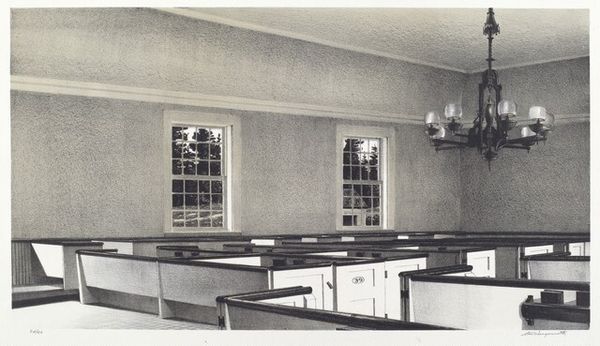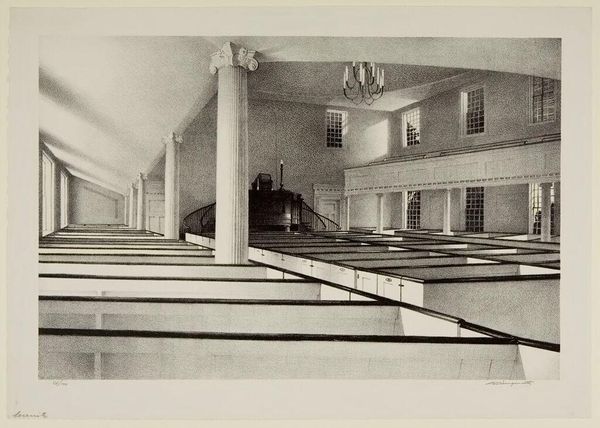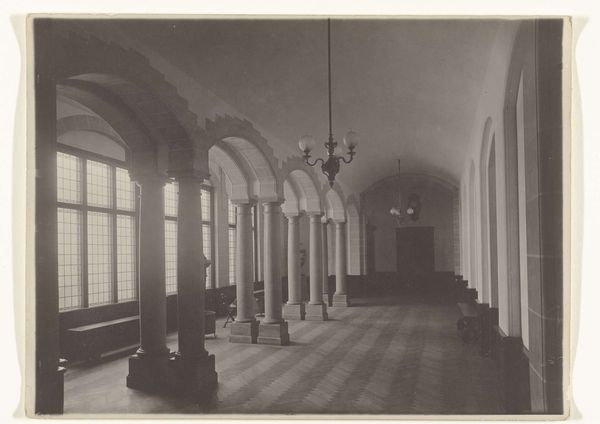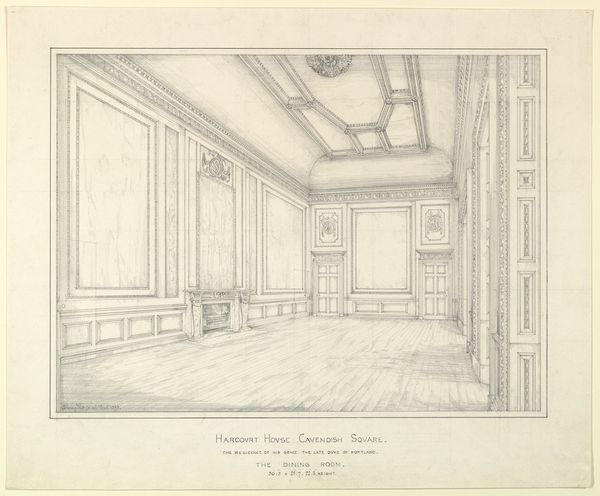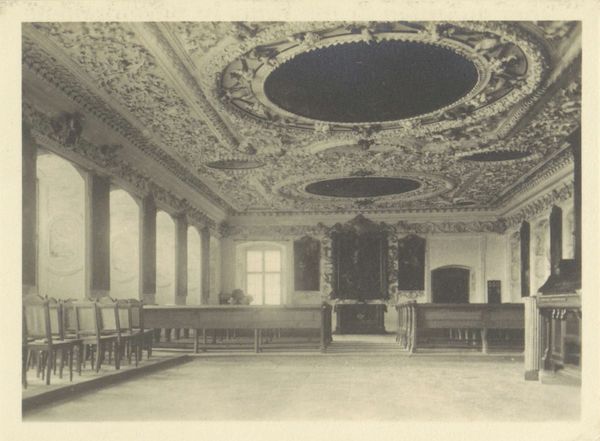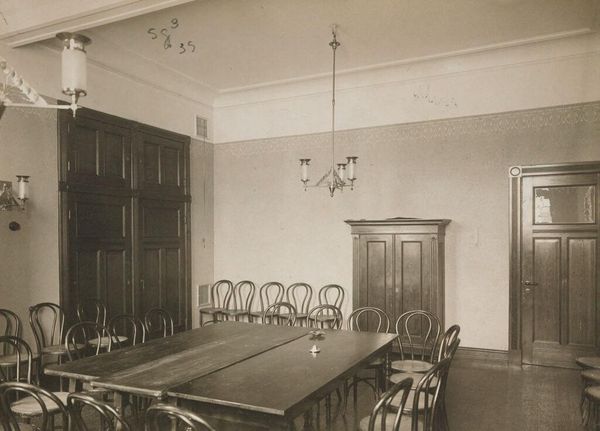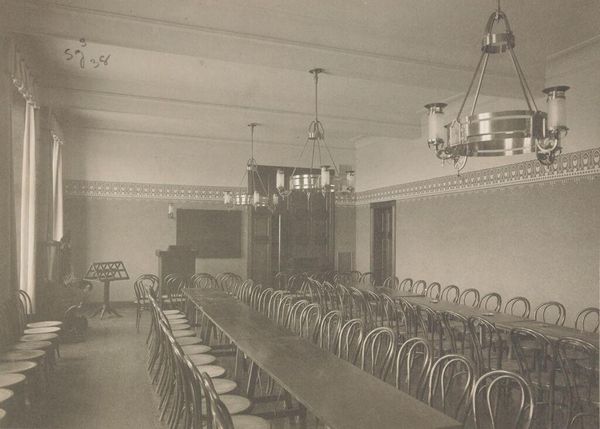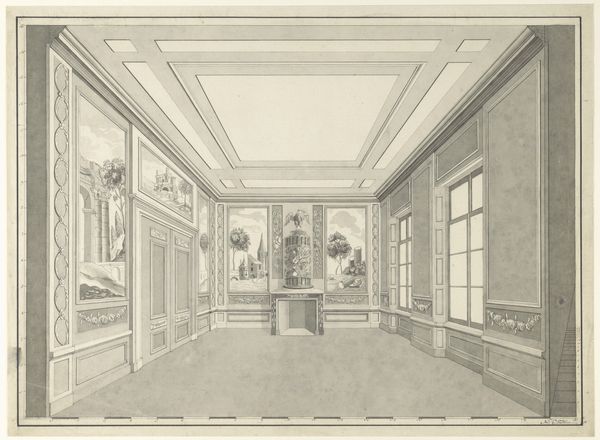
drawing, print, etching, graphite
#
drawing
# print
#
etching
#
landscape
#
graphite
#
cityscape
#
academic-art
#
realism
Dimensions: image: 23.18 × 45.09 cm (9 1/8 × 17 3/4 in.) sheet: 36.04 × 30.48 cm (14 3/16 × 12 in.)
Copyright: National Gallery of Art: CC0 1.0
Curator: Stow Wengenroth's 1956 etching and graphite drawing, "Spirit of New England," offers a stark yet elegant glimpse into what appears to be a traditional meeting hall. The details rendered in black and white really bring forth a sense of timelessness. Editor: It strikes me as very somber and orderly. The meticulous rendering of light and shadow almost transforms the ordinariness of this empty meeting hall into a place of… almost… veneration. I wonder what those benches are made of. Curator: The very emptiness might invite us to consider concepts of democratic space and collective identity, especially given the prominent display of the American flag in the composition. Is this, perhaps, a commentary on civic ideals versus their lived realities? Editor: Right, but thinking materially, that flag is made from fabric, a mass-produced object meant to represent the immaterial spirit you mention. Then look at that incredible chandelier, probably handcrafted…such contrasting production processes reflecting societal values. Curator: Precisely, we could extend this to discuss the changing definition of "New England spirit" in the mid-20th century, framed by postwar prosperity and growing social tensions. Is this space, literally constructed for communal gathering, truly accessible and welcoming to all? The symbolism feels pointed, and prompts one to meditate upon who occupies such civic chambers, then, now, and forever? Editor: The use of graphite here too--think of where graphite comes from. Its mining and distribution... what human networks facilitate this image? Even those pristine window panes represent specific glass production practices, embedded in labor relations, manufacturing traditions… It is a beautiful piece of drawing, of course. But let’s not forget that it came into existence through actual means, however subtle and precise! Curator: A fair point—thank you for drawing our attention to the tangible aspect! And thank you to the artist, who offers much for us to meditate on. Editor: Definitely, this print offers so much food for thought. Let us remember and contemplate these nuances further when revisiting such an amazing exhibition.
Comments
No comments
Be the first to comment and join the conversation on the ultimate creative platform.
